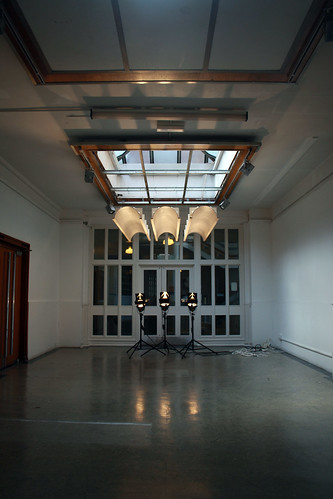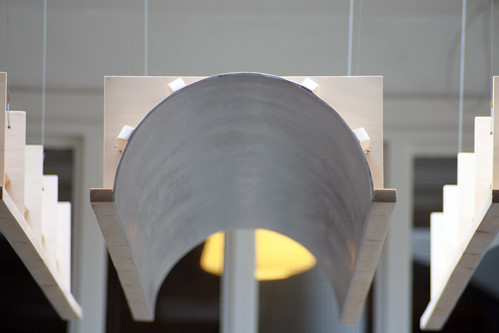Things are drawing to a close, and in a period of rapid change in my work, I have neglected my blog. The Master's Show is two weeks out, and I'm almost complete one work, The New RC Pavilion, and contemplating the fate of what I've come to refer to as the "3D work". Instead of a blow by blow account of what I have been up to, I'll try and inject the thought processes as they've developed with the work.
The New RC Pavilion
The centrepiece and the physical manifestation of my Masters work, which I frame under the dramatic title of The Monument of Ruin, or TMOR (due to my enjoyment of industrial sounding abbreviations).
From the early stages of my Masters I identified that the work with St. Bride's, went beyond the digital, and a 3D model (projected or otherwise). The modelling afforded me, similar to undergraduate, an intimate understanding of the structure, but the "mythology" surrounding Gillespie, Kidd & Coia, had to be articulated in a physical object. The notion of a "pavilion", a Modernist Soap Box from which to deal with issues of the context, and ironies of the Movement as it is perceived today. Miles Glendining in his book, Architecture's Evil Empire - the triumph and tragedy of global modernism, succinctly gives reason for the prominence of Gillespie, Kidd & Coia's work in an age of what he refers to as "New Modernism":-
In places that were short of 'heroic' old modern egos, reputations could be posthumously manufactured. In Scotland, for example, where the 1950s and '60s had been dominated by the worth establishment of Sir Basil Spence and Sir Robert Matthew, New Modernist propagandists in the 1990s and 2000s constructed a myth of heroic genius around a local firm of postwar church designers, Gillespie, Kidd & Coia...
My opinion of Gillespie, Kidd & Coia has come full circle, initially displaying frustration towards the lack of dogma behind their work, then accepting it as part of the visual vocabulary of the Modern Movement, and again, feeling a slight aversion towards what I refer to as The Mac (Mackintosh School of Architecture) triumphalist touting of the firm. These are honest words from someone who has based his Masters on the firm, but I've now come to a point where I accept the "myth" of Gillespie, Kidd & Coia as part of their present day cultural value. Although no doubt Miles would disagree, there is a romance behind places like St. Peter's Seminary, and artists are drawn towards these visual queues that are, sometimes, loaded with fictitious ideologies.
Gillespie, Kidd & Coia, for me, represent a "high-art Modernism" as their brutish and striking buildings are endowed with histories that go to the core of our relationship with the Modern Movement. Similar to Sir Basil Spence's Queen Elizabeth Square, a poster boy for the Modernist high-rise in Scotland, with its demolition in 1993, it became a monument to this shift in opinion towards anti-Modernist rhetoric. So one could argue, that St. Peter's, like Queen Elizabeth Square, has become, as Miles suggests (with regards to GK&C's churches), a poster boy for a romanticised "Heroic Modernism" in Scotland.
The NVA are essentially attempting to re-asscribe cultural value to St. Peter's, and this notion, along with other dichotomous narratives which play out in GK&C's practice, are given centre stage on The New RC Pavilion.
I think I'm going to stop for the moment, as I've chewed through some momentous thought. I'll attempt to update later this week, going into a little more detail about plans for the Masters Show.



No comments:
Post a Comment